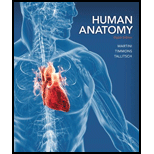
Match each numbered item with the most closely related lettered item.
extrinsic laryngeal musculature.........
a. superior portion of the pharynx
b. bridge of the nose
c. nose, nasal cavity, paranasal sinuses, nasal conchae. and nasopharynx
d. windpipe
e. lobar bronchi
f. contains and protects the glottis
g. larynx, trachea, bronchi, bronchioles and alveoli of the lungs h. provide protection for the vocal folds
i. positions and stabilizes the larynx
j. segmental bronchi
To review:
Match the term extrinsic laryngeal musculature with the most closely related description given below:
Superior portion of the pharynx
Bridge of the nose
Nose, nasal cavity, paranasal sinuses, nasal conchae, and nasopharynx
Windpipe
Lobar bronchi
Contains and protects the glottis
Larynx, trachea, bronchi, bronchioles, and alveoli of the lungs
Provide protection for the vocal folds
Positions and stabilizes the larynx
Segmental bronchi
Introduction:
The larynx is also known as voice box and consists of laryngeal muscles. These muscles are segregated on the basis of muscles’s location. These muscles are further classified as extrinsic and the intrinsic muscles.
Explanation of Solution
The extrinsic musculature consists of one muscle that embeds into the laryngeal cartilage and the other in its adjacent structures. The main function of the extrinsic muscles includes providing stability and support to the larynx. It connects larynx to other structures and muscles for up and down movement during food swallowing and avoids food to enter glottis while speaking. Some of the extrinsic muscles are inferior constrictor muscles, sternothyroid muscles, mylohyoid muscles, digastric, omohyoid muscles, and thyrohyoid muscles.
Therefore, it can be concluded that extrinsic laryngeal musculature can be correctly matched with the option (i) positions and stabilizes the larynx.
Want to see more full solutions like this?
Chapter 24 Solutions
Human Anatomy (8th Edition) - Standalone book
- please fill in the empty sports, thank you!arrow_forwardIn one paragraph show how atoms and they're structure are related to the structure of dna and proteins. Talk about what atoms are. what they're made of, why chemical bonding is important to DNA?arrow_forwardWhat are the structure and properties of atoms and chemical bonds (especially how they relate to DNA and proteins).arrow_forward
- The Sentinel Cell: Nature’s Answer to Cancer?arrow_forwardMolecular Biology Question You are working to characterize a novel protein in mice. Analysis shows that high levels of the primary transcript that codes for this protein are found in tissue from the brain, muscle, liver, and pancreas. However, an antibody that recognizes the C-terminal portion of the protein indicates that the protein is present in brain, muscle, and liver, but not in the pancreas. What is the most likely explanation for this result?arrow_forwardMolecular Biology Explain/discuss how “slow stop” and “quick/fast stop” mutants wereused to identify different protein involved in DNA replication in E. coli.arrow_forward
- Molecular Biology Question A gene that codes for a protein was removed from a eukaryotic cell and inserted into a prokaryotic cell. Although the gene was successfully transcribed and translated, it produced a different protein than it produced in the eukaryotic cell. What is the most likely explanation?arrow_forwardMolecular Biology LIST three characteristics of origins of replicationarrow_forwardMolecular Biology Question Please help. Thank you For E coli DNA polymerase III, give the structure and function of the b-clamp sub-complex. Describe how the structure of this sub-complex is important for it’s function.arrow_forward
 Cardiopulmonary Anatomy & PhysiologyBiologyISBN:9781337794909Author:Des Jardins, Terry.Publisher:Cengage Learning,
Cardiopulmonary Anatomy & PhysiologyBiologyISBN:9781337794909Author:Des Jardins, Terry.Publisher:Cengage Learning, Fundamentals of Sectional Anatomy: An Imaging App...BiologyISBN:9781133960867Author:Denise L. LazoPublisher:Cengage Learning
Fundamentals of Sectional Anatomy: An Imaging App...BiologyISBN:9781133960867Author:Denise L. LazoPublisher:Cengage Learning Comprehensive Medical Assisting: Administrative a...NursingISBN:9781305964792Author:Wilburta Q. Lindh, Carol D. Tamparo, Barbara M. Dahl, Julie Morris, Cindy CorreaPublisher:Cengage Learning
Comprehensive Medical Assisting: Administrative a...NursingISBN:9781305964792Author:Wilburta Q. Lindh, Carol D. Tamparo, Barbara M. Dahl, Julie Morris, Cindy CorreaPublisher:Cengage Learning- Basic Clinical Lab Competencies for Respiratory C...NursingISBN:9781285244662Author:WhitePublisher:CengageSurgical Tech For Surgical Tech Pos CareHealth & NutritionISBN:9781337648868Author:AssociationPublisher:Cengage
 Human Physiology: From Cells to Systems (MindTap ...BiologyISBN:9781285866932Author:Lauralee SherwoodPublisher:Cengage Learning
Human Physiology: From Cells to Systems (MindTap ...BiologyISBN:9781285866932Author:Lauralee SherwoodPublisher:Cengage Learning





